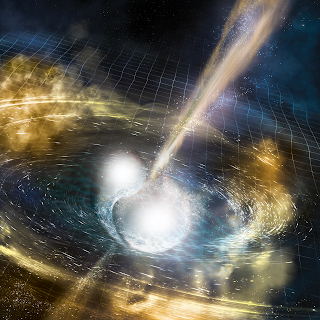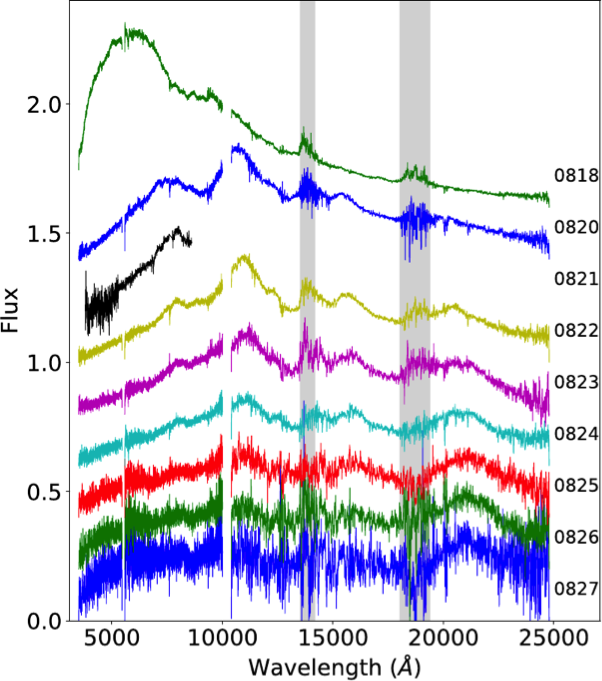The merger of two neutron stars opens the era of multimessenger astronomy
On August 17 at 12:41:04 UT the two LIGO and the Virgo gravitational wave interferometers detected the merging of two neutron stars, which occurred in the lenticular galaxy NGC 4993 at a distance of 40 Mpc (see Fig. 1). Two seconds later the Fermi satellite saw a short gamma-ray burst.

Figure 1: Artist view of a neutron star merger (Credit: NASA/Swift/Dana Berry).
This simultaneity and the coincidence of the position of the signals indicated that this was a single event; within minutes astronomers had turned their telescopes to the source, to capture for the first time the electromagnetic counterpart of an object detected in gravitational waves. Ultimately more than 70 observing facilities both ground- and space-based were used to study the electromagnetic counterpart, and verify the existence of a "kilonova" that had never before been clearly detected. INAF astronomers led many of the followup studies (see MediaINAF), and four scientists from the Arcetri Astrophysical Observatory were also involved.
In particular Leslie Hunt participated in the study of optical and near-infrared spectra obtained with Xshooter at the VLT (Pian et al. 2017, see the Figure 2), Viviana Casasola collaborates with the team which observed the source in the radio with SRT (Aresu et al. 2017), Sperello di Serego Alighieri contributed to the optical polarimetry of the source obtained with FORS2 at the VLT (Covino et al. 2017), and Marco Padovani, who took part to the follow-up with gamma rays (HESS collaboration, 2017).

Figure 2: Optical-IR spectra of the neutron stars merger obtained on consecutive days, as indicated on the right (Credit: Pian et al. 2017).



